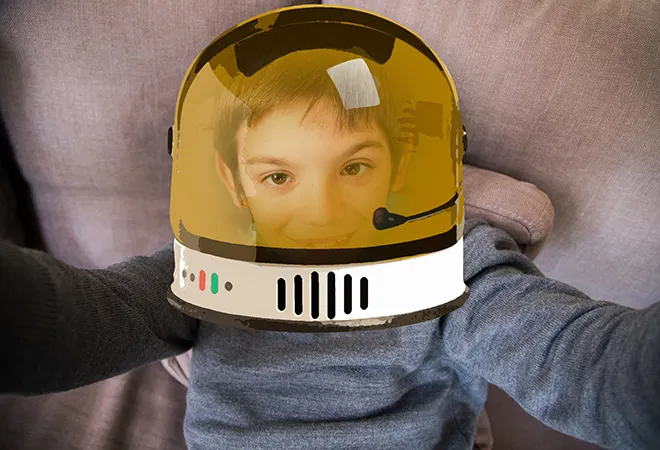
Over the past century industrial revolutions have improved the quality of life and allowed for greater specialisation, increased trade, and the expansion of an industry of leisure and with it a greater introspection on human performance. Specialisation and the combination of ‘wellness’ consciousness and wearable technology has allowed for the growth of a $5 trillion wellness economy. By the end of the 2010s, “wellness” became mainstream with mindfulness practices, digital detox, yoga, and an awareness of proactive mental and physical health at the centre of it.
For professional athletes and leading executives, human performance became mainstream. The 2010s saw a boom particularly in the spaces of sleep performance and brain performance. Though the help of sleep coaches, professional sports teams have directed their attention to the science of sleep and how it improves cognitive and body performance during competition. Similarly high performing executives and celebrities have sought the help of brain coaches to help them improve their mind’s capabilities and expand their brain’s potential.
Specialisation and the combination of ‘wellness’ consciousness and wearable technology has allowed for the growth of a $5 trillion wellness economy.
In this new decade of the 2020s, we are about to experience more change than in the last 100 years combined as every industry will reinvent itself. The decade kicked off with an unexpected pandemic which has touched every person, company, industry, and government in the world. With pandemic induced layoffs, widespread corporate bankruptcies, the slowdown of international supply chains and the dramatic reduction of the movement of people around the world, a new type of human performance is urgently needed to thrive through this volatility.
I propose a new sub-field within human performance — Imagination Performance.
It will be Imagination Performance that will help us adopt with agility, flourish through adversity, and creatively innovate to remain relevant.
What is Imagination Performance?
My vision for imagination performance rests on a mindset of abundance, is shepherded by the continuous cycle of learning, unlearning, and relearning, and is strengthened through applied novelty.
In order to allow room for unrestricted thinking people must actively abandon a scarcity mindset which is fuelled by fear. Instead, an abundance mindset allows for new opportunities and possibilities to be explored without prejudice and the ingenuity derived comes from the premise that there are an abundance of options that can be created. The metaphorical pie can become bigger and for those who are not limited by the rims of the pie, the pie can be accompanied by many sides on the table.
The learning process is accelerated for those who are naturally and perpetually curious. For those who have lost their childlike curiosity, it can be worked on and revived in adulthood.
An abundance mindset is only the foundation and is not sufficient alone to bolster imagination. It must be cultivated with an intentional desire to learn new things. The learning process is accelerated for those who are naturally and perpetually curious. For those who have lost their childlike curiosity, it can be worked on and revived in adulthood. Curiosity serves as an important catalyst for the challenging task of unlearning obsolete philosophies, letting go of outdated business models and reimagining antiquated ideas of social equity.
Finally, to be at one’s peak of imagination performance is to experience and to be exposed to novelty in theory and in practice. The following section expands on this.
Cross industry examples to engage the imagination muscles
Just as there are certain foods that help brain performance, there are ideas that can serve as food for the imagination. The following table offers some food for the muscles of the imagination:
| Status Quo |
|
Transformation |
 |
Physical Clothes
Physical clothes are worn on human bodies. |
➔ |
Digital Clothes
Digital clothes are worn on digital avatars. The rise of digital couture as begun. |
 |
“You can’t reinvent the wheel”
The wheel has reached peak performance and cannot be outdone. |
➔ |
“Abandon it”
Hyperloop as contracts around the world to transport people underground using a passive magnetic levitation system. |
 |
Aging is irreversible.
Aging is a fact of life and is one directional in sync with chronological age. |
➔ |
Aging is a disease.
The information theory of biology along with longevity research suggests that aging is reversible. |
 |
Food grows in the ground.
Food has always grown from the soil of the earth. |
➔ |
Food grows in the air.
Aeroponic systems can reduce water usage by 98 %, fertiliser usage by 60%, and pesticide usage by 100 %, all while maximising crop yields. |
 |
Restaurants need tables for diners.
Restaurants are establishments for people to eat at. |
➔ |
“Dark Kitchen” — no tables.
Kitchen-as-a-service has led to the rise of “dark kitchens” which are not public facing and only deliver meals. |
 |
Cities are built on top of the ground.
The built urban environment is traditionally above ground. |
➔ |
Cities are subterranean.
As climate change claims more land and cities look to grow, subterranean cities become viable solutions.
Ex: Singapore |
These examples serve as a mechanism to stretch the imagination in the art of the possible and enhance the mind’s ability to creatively derive solutions for other problem sets. Increasing the exposure to more diverse and novel ideas helps encode new information by tuning connections between neurons and allows the brain to strengthen the links between them. This improves the velocity of ‘dot-connecting’ that the brain does when solving for problems and increases the possibility for creative ideas.
The Paradox: Human nature is averse to change but thrives on novelty
Across cultures and countries people are very similar in that the average person does not like change and many people outright ignore or reject what they don’t understand. These common human traits can be seen throughout history and across the technological advancements in previous centuries. If people, businesses, and governments are to thrive in the next decade of swift change, they will need to reimagine everything they know to be the ‘status-quo.’
Common human traits can be seen throughout history and across the technological advancements in previous centuries.
The consequences for uninformed and unimaginative strategies to posture for future threats and opportunities will be too great to ignore the importance of ‘Imagination Performance.’
Coronavirus and rapid technological change have made it an imperative to further expand our understanding of human performance and embrace imagination performance as the tool that augments our strategic planning to flourish during the turbulence of the 2020s.
The views expressed above belong to the author(s). ORF research and analyses now available on Telegram! Click here to access our curated content — blogs, longforms and interviews.










 PREV
PREV

